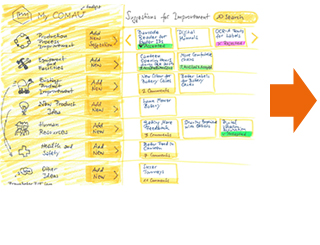Prototyping – What is it?
Through prototyping, a product or service is given a first visual or haptic form, which allows an idea to be experienced in the early stages of development. The result is a common understanding of the idea and thus a basis for communication and discussion of further action. After a prototype is completed, feedback and concept adjustments can be made in order to achieve the final product. The use of prototyping is an essential part of our human-centered methodology.
What are the advantages of prototyping?
Prototyping enables the collaborative integration of stakeholders that are continuously involved throughout the entire project. This consideration of stakeholder needs paves the way towards a successful final product. Errors are detected early and can be corrected cost-effectively.
The advantages at a glance:
- Visual communication basis
- Focus on the essentials
- Involvement of potential end-users
- Feedback from all stakeholders
- Early concept review
- Detection of need for correction
- Cost and effort saving adjustments possible
When should prototypes be used?
If you asked us when prototypes should be used, our answer would be: Always. Regardless of the project status, you can present prototypical solutions for ideas that are in their beginning and mature stages, or even propose potential changes to existing products. There is a suitable methodology for all applications.
As soon as you visualize a solution idea, it immediately becomes more tangible. Whether it be a digital application, a service or any other type of product.







